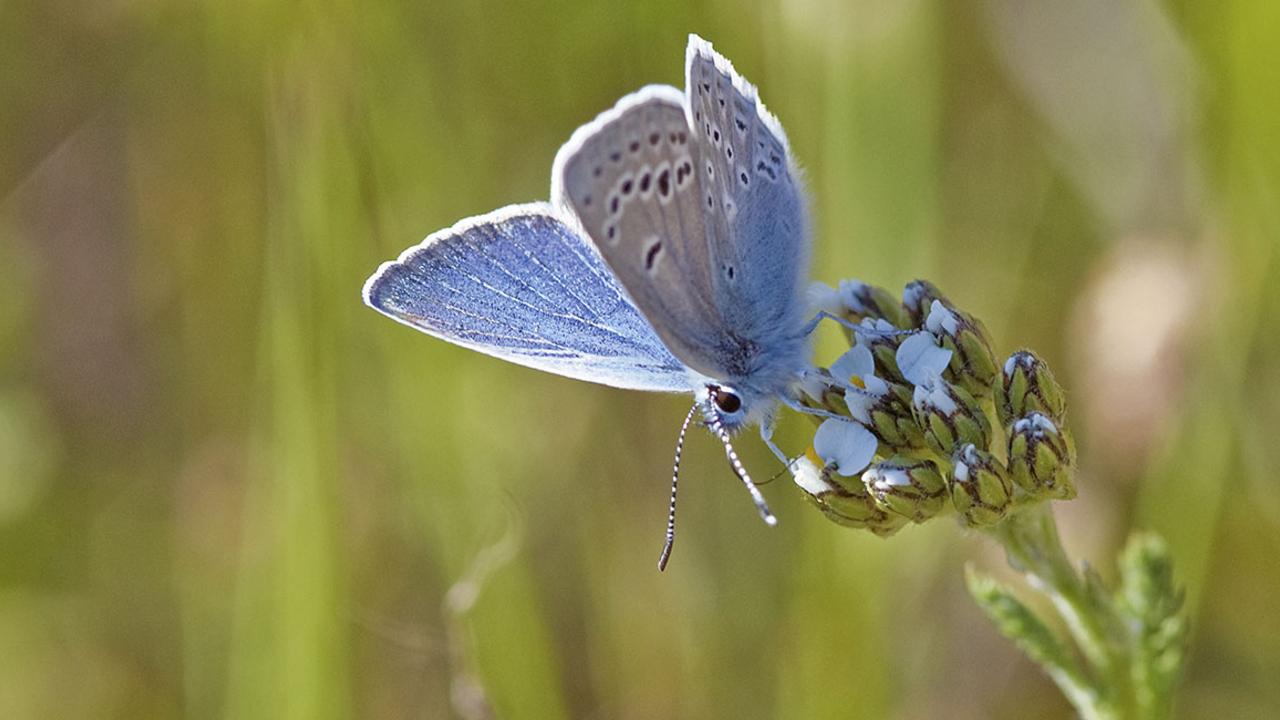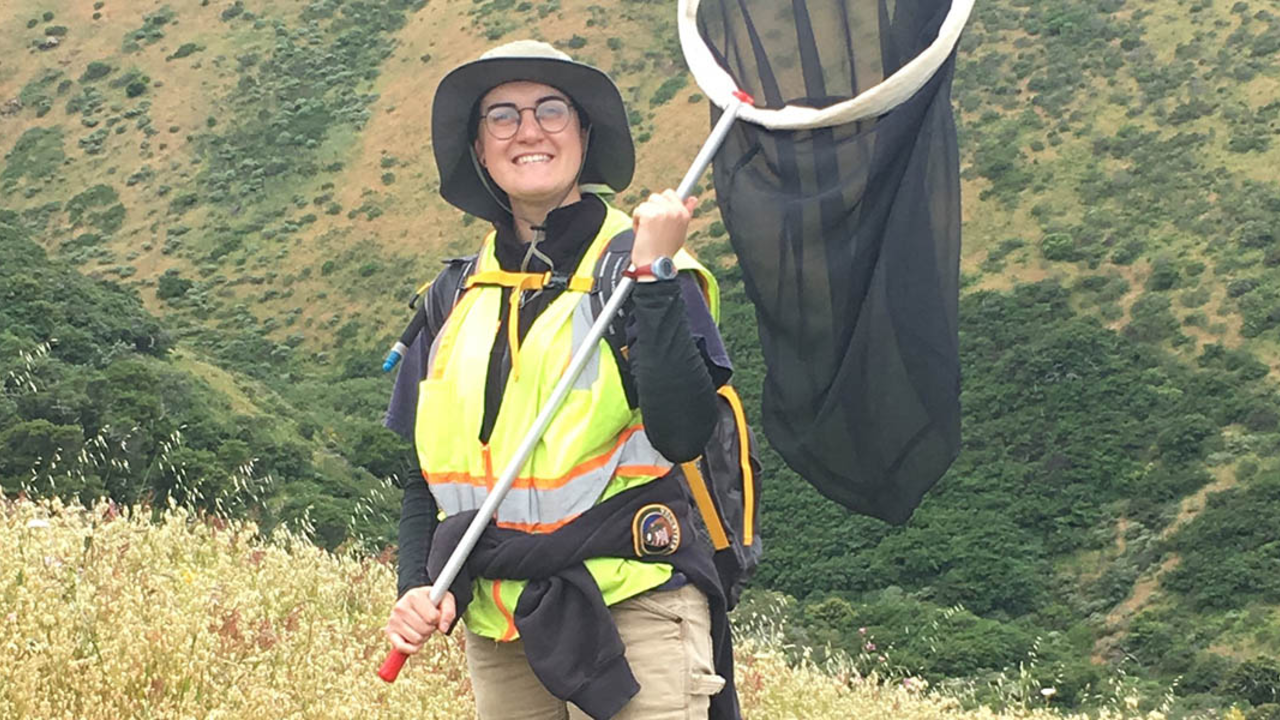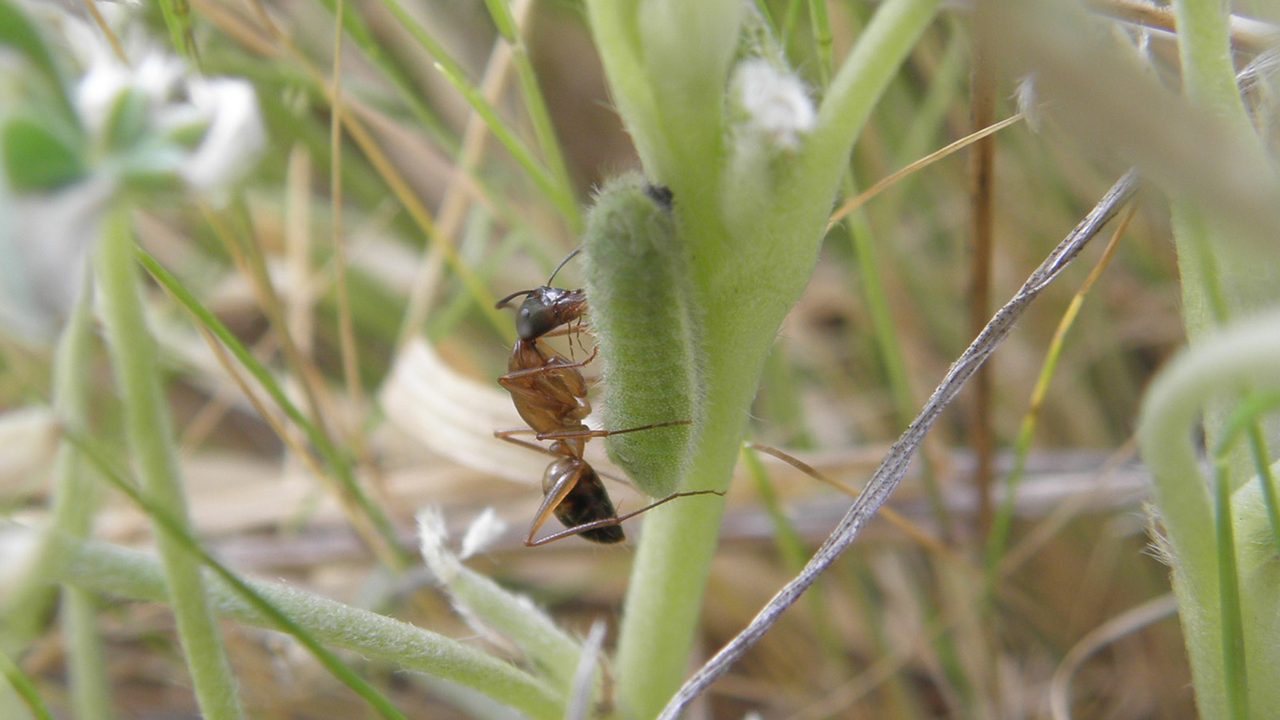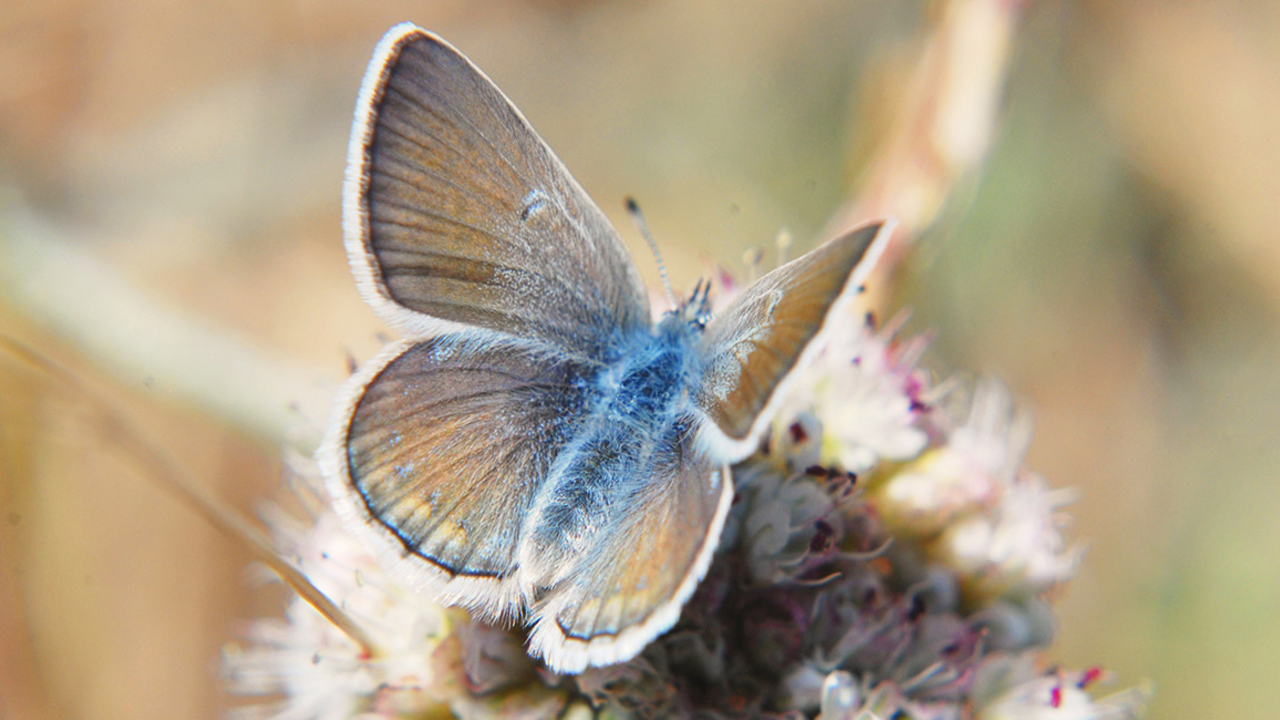Lupine and butterfly nets: Step-by-step on how we're helping save endangered Mission blue butterfly

Jessica Weinberg McClosky/Parks Conservancy
By Samuel Peña
San Mateo Park Stewardship Intern
The endangered Mission blue butterfly is just wrapping up its flight season, which goes from about mid-March through June. The flight period of the butterfly only lasts about 6-10 days, and while that’s just a small portion of its year-long lifespan, it’s the time in the butterfly’s life that gets most of the glory.
It’s exciting at this is the time of year, when we see the beautiful blue colors of the butterfly gleaming as it flies the short distances from lupine patch to lupine patch, mating with other butterflies and starting to lay eggs.
Seeing some of these beautiful butterflies flying around the past few weeks has definitely put a huge smile on my face. I couldn’t help but think about the massive amount of work the Golden Gate National Parks Conservancy and the National Park Service, along with the support of many volunteers, has put in to ensuring that the Mission blue butterfly can have a healthy habitat to thrive. Our long-term hope is to increase its population and get it off the Endangered Species List, where it has been listed since 1976.
Our park stewardship program plays a tremendous role in helping create the correct habitat for the Mission blue butterfly. The Mission blue requires a larval host plant and appropriate nectar plants in a coastal grassland habitat. The host plants used by the Mission blue are silver lupine (Lupinus albifrons), summer lupine (Lupinus formosus), and varicolor lupine (Lupinus variicolor). A substantial amount of time this past planting season was devoted to planting these lupine species. Lupines are delicate plants and the prep work required to ensure that they will survive once planted in the ground also requires a lot of thought and effort.
Before we head to our planting site, preparation of the materials needed for planting takes place at our offices. We spend time sterilizing and heat-treating soil, which is combined with the soil we dig out from planting holes at Milagra Ridge. This combination of our soil amendment with the soil from our planting site creates more surface area underground and will allow more water to percolate throughout the soil column when it rains. Time is also spent mixing up a water polymer called soil moist. The soil moist releases small amounts of water into the soil and ensures that our planted lupines will continue to get at least some moisture in drought years, or years with less precipitation. Once we have all this material prepared, we are finally able to take our plants to the park to be planted.
Careful thought is put into assigning the best locations for the lupines, and then that location is scraped with a rake, since lupines prefer growing in land that is slightly disturbed. The plants are laid out by staff and interns, and then everyone helping out that day can dig the holes, and put our lupine in the ground, making sure that the soil amendment, soil moist, and native soil are evenly layered throughout the planting.
Once the lupine is planted, we put up protective caging around the plant to make sure we prevent herbivores from eating the new plants. After the caging is up and all our plants are in the ground for the day, we then water the plants (if there is no rain in the forecast) before we leave the park site.
As you can see, the process for planting lupines is quite extensive, but putting all this time and effort into lupine planting helps the survival rate of these plants, and creates more habitat for the Mission blue butterfly.

In addition, the Mission blue butterfly translocation project is also one of the most important and exciting times of the year. This project takes place over the course of several days during the flight season and this year we set a goal of translocating 30 Mission blue butterflies (20 females and 10 males) from San Bruno Mountain to Milagra Ridge.
In order to preserve the already existing lupine habitat, there is a limit on the amount of staff and interns who can head over to San Bruno Mountain for the day. Permitted staff are the only ones allowed to catch the butterflies with nets, but other staff are there to help keep a lookout as butterfly spotters, take GPS coordinates of the exact spot where the butterflies were caught, and help with the transportation of the butterflies once they’re collected. When the daily limit of catching six females and three males is reached, staff and interns head over to Milagra Ridge to start the process of releasing the butterflies.
Upon arriving at Milagra Ridge, a healthy lupine is selected to release the butterfly, and we cover the plant with see-through tulle fabric, ensuring the area is enclosed. Following the release, “butterfly sitting” can begin. We carefully watch the butterfly from anywhere between one-two hours, taking note of anything and everything exceptional that may happen. How active is the butterfly? Is the butterfly flying around? If we release a male and female into the netting, how is their interaction? We pay special attention to see if a female Mission blue lays an egg (oviposition) and document the time it occured. After an hour or two, we are finally able to remove the fabric, let the butterfly be free, and wish it the best for its remaining few days of life.
While the Mission blue butterfly remains on the endangered species list, it’s our responsibility as staff, interns, and supporters of the Parks Conservancy to ensure we’re doing everything in our power to help increase the population of this butterfly. The amount of work required to achieve this is large, but thankfully, we have the invaluable support of volunteers to participate and assist in this rewarding work. Although we are towards the end of the butterfly flight season, hopefully you have the chance to make it out soon to Milagra Ridge and spot a Mission blue butterfly yourself, taking some time to appreciate all that is currently going on in our parks to ensure it stays around.

